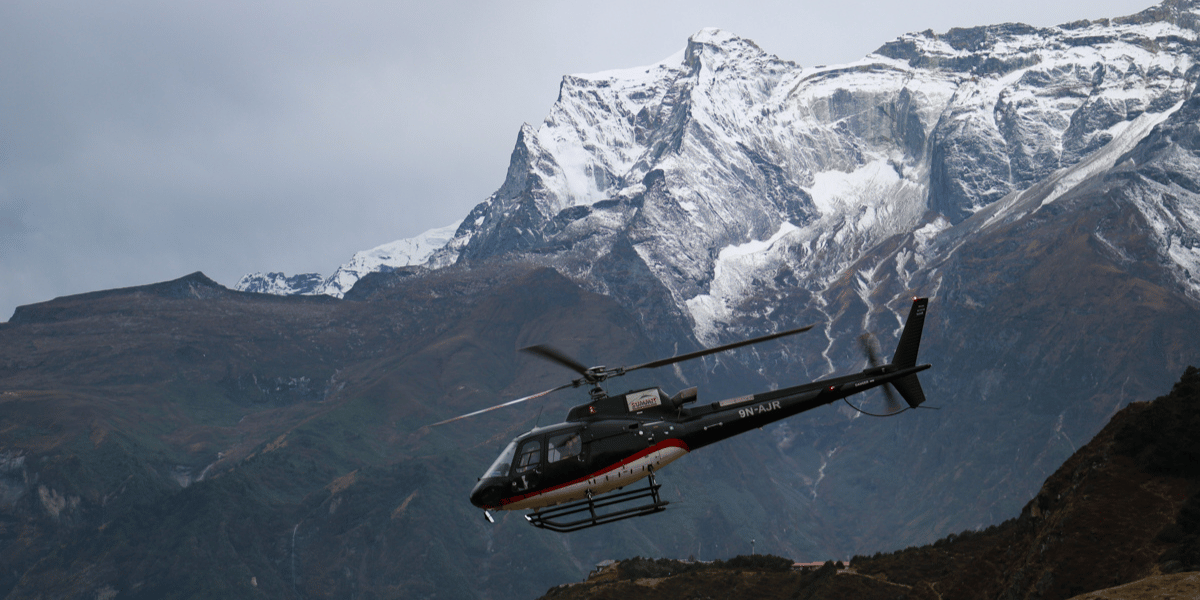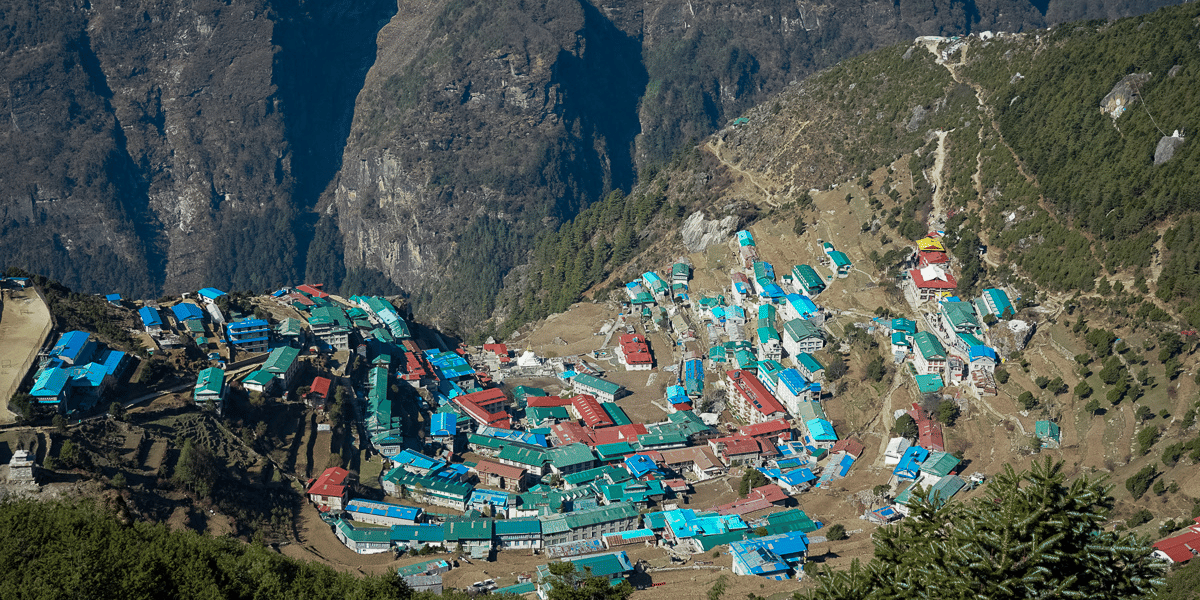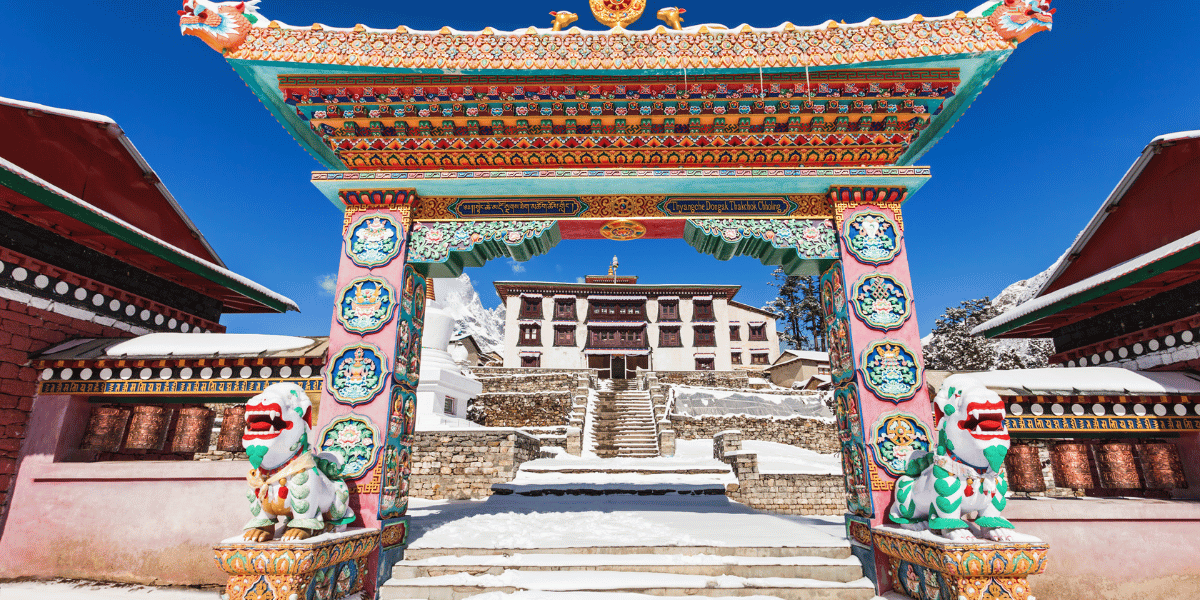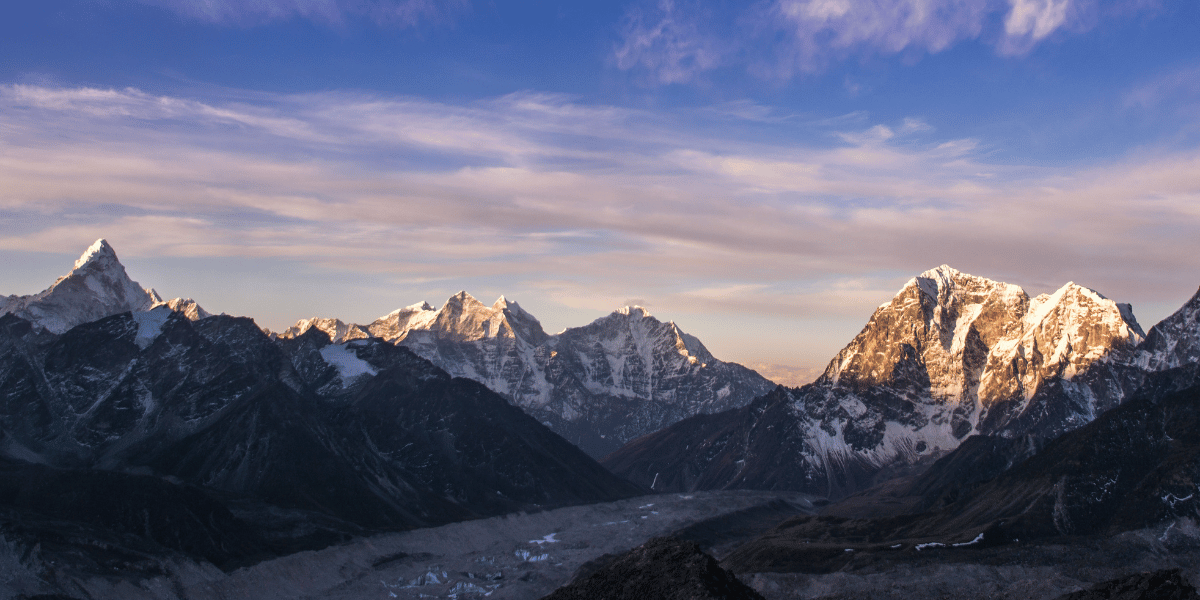This trek to Everest base camp is known for its high level of challenges and worldwide reputation. There are numerous choices available for Everest base camp treks, but our Everest Base Camp trek with Heli Return offers a unique twist. Wondering what sets this one apart from the rest? This Everest base camp trek offers a convenient helicopter return instead of retracing your steps, saving you time and providing a unique trekking and travel experience. This 13-day trek is shorter than a traditional Everest base camp trek but still offers an equally thrilling travel experience, with additional amazing adventures along the way. Set out on an exhilarating high-altitude adventure trek, packed with adrenaline-pumping activities. Join us on this trek for an unforgettable adventure through the untamed beauty of Sagarmatha National Park, culminating in a breathtaking destination. Experience the majestic Mt. Everest, along with the chance to immerse yourself in the unique Sherpa culture and the raw beauty of the mountains.
While staying in Nepal, you will have the opportunity to explore the country's beauty, from its stunning nature to its rich culture, which will leave you in awe. Nepal boasts a unique geography with its lofty mountains and abundance of flora and fauna. In addition, you will also gain insights into the country's rich history and beautiful culture throughout the trip. During the trip, you will have the opportunity to see the beauty of the city. While trekking, you will see picturesque villages, viewpoints, and gorgeous natural beauty. During your time in Kathmandu, you will explore the historical landmarks on your sightseeing programme. These sites are listed as UNESCO World Heritage Sites due to their centuries-old significance. The sites in the Kathmandu Valley are easily accessible.
As you begin your sightseeing journey, you will begin at Kathmandu Durbar Square, a former royal palace situated in the heart of Kathmandu city and considered one of the most stunning among several royal palaces. Inside Durbar Square, there are numerous temples, landmarks, and courtyards filled with beautiful ancient artworks in the form of sculptures, architectural structures, and historical temples that will surely fascinate you. Another site is Swayambhunath, dedicated to both Hindu and Buddhist deities, representing religious harmony. Situated atop a small hill, this place also goes by another name, the ‘Monkey Temple’. It offers a breathtaking panoramic view of Kathmandu city. Next up is the Pashupatinath Temple, one of the most significant Hindu temples dedicated to Lord Shiva. The site of pilgrimages showcases remarkable architectural designs from the Malla era, known for its Pagoda style architecture. Many devotees visit this place due to its significant religious aspects, and it is considered one of the most important Shiva temples. Finally, the Boudhanath Stupa is one of the largest Buddhist stupas globally, dedicated to the Buddhist religion. It is recognised as a spiritual hub where thousands of people find peace and spiritual calmness. The stupa is adorned with prayer flags that flutter in the wind, spreading peace around the world.
The Everest region is expansive, encompassing a variety of locations from picturesque villages to towering mountains. Numerous remarkable spots stand out as highlights and are worth mentioning. Here are some iconic places you will encounter during your trek:
Lukla - Gateway to Everest
Lukla is the primary starting point for treks in the Everest region, linking it with other areas of the country. It is situated at an elevation of 2,840 m above sea level, offering stunning views of the surrounding area and proximity to the mountains. Lukla is a popular destination in the Everest region due to its scenic airport, known for its unique location. Lukla is home to an airport known as Tenzing Hillary Airport, featuring one of the shortest runways globally. Lukla is a popular destination in the Everest region, showcasing unique cultural and landscape features from other regions of Nepal, making it a worthwhile place to visit.
Namche Bazaar - the Sherpa Hub
Namche Bazaar is a historical trading route that highlights the rich culture and history of the Sherpas, making it a popular destination for trekkers. This stop, located at an elevation of 3,440 m above sea level, is a popular destination for trekkers looking to acclimatise and enjoy the stunning scenery. Namche is a well-developed area in the Everest region, offering a range of facilities, from luxury hotels to cafes and game bars. It's impressive to find such amenities in such a remote region. Many travellers make a stop at Namche to relax and immerse themselves in the amazing culture and beauty of the place before continuing their journey.
Everest Base Camp - The ultimate destination
Everest Base Camp, situated at an elevation of 5,364m (17,598 ft), is the ultimate destination of this trek. The base camp is situated directly beneath the towering Mt. Everest, the tallest mountain in the world. The Everest Base Camp offers a stunning view of the mountains, glaciers, and unique landscape beneath Mount Everest. This is where climbers gather and prepare before attempting to climb Mount Everest. It is one of the best parts of the trek as one gets the stunning view of Mt. Everest (8,848m), Lhotse (8,516m), Makalu (8,485m), Cho Oyu (8,188m), Nuptse (7,855m), Pumori (7,165m), Ama Dablam (6,812m), Thamserku (6,623m), the glacier, and the amazing surrounding view.
Kala Patthar - The vantage point of Everest
Kala Patthar, located at an elevation of 5,644 m/18,519 ft, is the vantage point of Everest. Kala Patthar, which translates to Black Rock in the native language, is the vantage point of Everest that provides a unique and panoramic view of the mountain. The base camp is situated at the base of Everest, offering a partial view of the mountain. However, from Kala Patthar, you can enjoy an unobstructed view of Everest and other peaks. From the top, you will see a 360-degree view of some of the highest peaks in the world, including Mt. Pumori (7,169m), Mt. Everest (8,848m), Lhotse (8,516m), the Tibetan peak Changtse, Nuptse (7,861m), Amadablam (6,812m), and countless other smaller peaks. Besides the gorgeous view, you can also get a celestial sunrise and sunset view.
Helicopter Return
One of the major highlights of the trek is the helicopter return, which provides a unique perspective of the mountains from an aerial view. Once you complete your trek to Everest Base Camp and visit Kala Patthar, you will return to Gorakh Shep, which is the end point of your Everest Base Camp with Helicopter return trek. From here, you will end your trek journey and return to Kathmandu by scenic flight. A helicopter will pick you up from Gorak Shep and fly you to Lobuche, with two people at a time, as permitted by the Nepali government. After dropping you off at Lobuche, you will then proceed to fly to Lukla for refuelling purposes, which will take some time, anywhere between half an hour and an hour. From there, you will fly nonstop to Kathmandu. The flight provides a stunning view of the surrounding area, showcasing the beautiful landscape and lofty mountains. Returning by helicopter after a week-long trek can be the most relaxing and unforgettable memory.
What to expect?
This itinerary for the Everest Base Camp trek is well-executed and will make your journey memorable and relaxing. You will depart from the Everest Base Camp by Helicopter Flight, which is one of the best ways to end a remarkable trek. During this trek in Nepal, you will have the opportunity to witness the diverse natural and cultural aspects of the country, which vary from region to region. Immerse yourself in the fascinating beauty that surrounds you. The Everest Base Camp Trek is one of the most popular treks in the Everest region. It takes you to the base of the tallest mountain in the world while exposing you to the different and beautiful culture and landscape of Nepal's highlands. Starting the trek from Kathmandu, the capital of Nepal, allows you to spend a few days exploring the city's beauty before heading out on the trek. While staying in Kathmandu, you go on a city sightseeing tour to visit some of the most breathtaking ancient landmarks listed as UNESCO World Heritage sites and explore their beauty.
Following your sightseeing, you will commence your trek with an exhilarating flight to Lukla, the starting point of the trek situated in the Everest Region. Flying from Kathmandu to Lukla is an incredibly adventurous experience. The flight takes you to one of the shortest runways, surrounded by beautiful hills and towering mountains. It's truly an adventure of a lifetime. Once you arrive, you will meet your trekking team, including porters and other support staff, and begin your walk. Walking past the local villages, adorned by their cultural and historical beauty, you will experience the unique Sherpa culture, well-known in the mountaineering sector. As you ascend, you will encounter charming villages, including Namche, highly regarded in the Everest region for being the Sherpa Hub. This area's facilities are unique and make it one of the top places in the Everest region. These locations provide a wonderful opportunity to explore the surroundings, learn about the culture, and enjoy the untouched beauty of the mountains away from the city. As you continue your journey, you will pass through unique landscapes, starting with lush evergreen forests and gradually transitioning to dry, rocky, and cold terrain as you get closer to your destination. During the journey, you will make several stops at local lodges to enjoy a relaxing and peaceful stay, all while taking in the breathtaking panoramic views of the mountains and the surrounding area.
Once you reach Everest base camp, located at an altitude of 5,364m/17,598 ft, you will be rewarded with an incredible vista of Everest and the surrounding mountains and glaciers. You'll get to see mountains such as Mt. Lhotse (8,516m), Makalu (8,481m), Cho Oyu (8,188m), Nuptse (7,861m), Pumori (7,161m), and Everest (8,848m) itself along other majestic peaks. While at Everest Base Camp, you won't have a full view of Everest due to its massive size blocking the top. However, you will visit another vantage point called Kala Patthar to see Everest from bottom to peak. Kala Patthar is situated at an elevation of 5,664m/18,519ft, offering a breathtaking 360-degree view of the surrounding mountains, including Everest, Nuptse, Changtse, and others. After visiting these stunning viewpoints, you will fly back to Lobuche by helicopter. From there, you will continue your journey to Kathmandu with a brief stop at Lukla for refuelling. Within 3-4 hours, you will reach Kathmandu. During the helicopter flight, you will experience a spectacular aerial view of the majestic mountains and surrounding area that will surely get your adrenaline pumping.
What makes this trek different?
This trek will challenge you physically, leading you through high-altitude terrain with altitudes ranging from 2,000m to 5,000m above sea level. Starting on this journey requires previous trekking knowledge and good physical condition. During the trek, you'll be walking at high altitudes for about 4-6 hours each day, which can bring some challenges. This trek is considered challenging due to the risk of high-altitude sickness, which should not be underestimated. If you are physically and mentally prepared, you will be able to handle the challenge of this trek and get the best trekking experience by watching the majestic mountains face to face while walking in a completely different terrain surrounded by fascinating culture. Despite the challenges, a professional trekking guide will accompany you throughout the trek to provide essential information for your safety and enhance your overall experience.
Our Everest Base Camp trek with Heli Return stands out as one of the top treks in the Everest region due to its customised itinerary and unique conclusion. This trek is truly amazing as it takes you to the beautiful and thrilling destination - of Everest Base Camp, along with numerous places along the trekking trail, including culturally and naturally rich places and viewpoints. This trek offers a unique twist compared to the traditional Everest Base Camp trek. It includes a scenic helicopter return to Kathmandu, bypassing the monotonous walk back on the same routes. This saves time and adds an exciting helicopter ride experience back to Kathmandu. If you wish to go on a trekking journey and also want to experience a breathtaking view of mountains and an aerial view of the Everest region, this trek is ideal for you. Experience the tallest mountain face to face and encounter the mesmerising view from a different perspective, perhaps from an aerial view. Join us on a trip to one of the most beautiful places on earth to witness the mighty mountains.
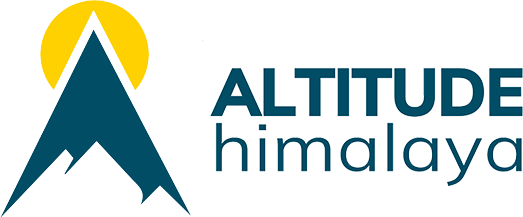

 Adventure
Adventure
 Couple
Couple
 Family
Family
 Luxury
Luxury
 Motorbike
Motorbike
 Photography
Photography
 Wildlife
Wildlife
 Yoga
Yoga
 Annapurna
Annapurna
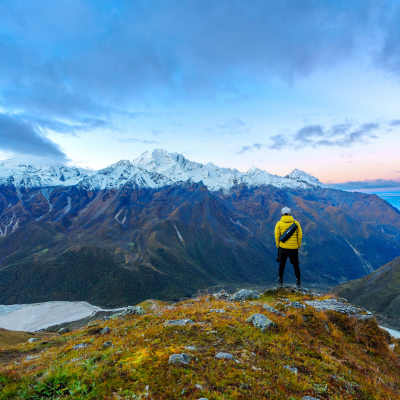 Langtang
Langtang
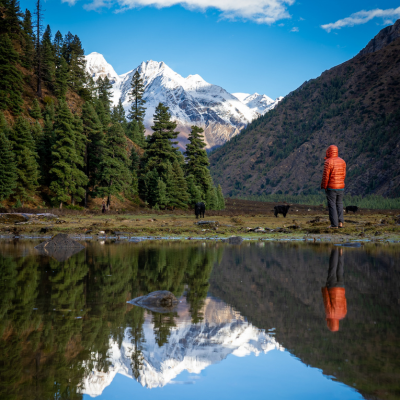 Dolpo
Dolpo
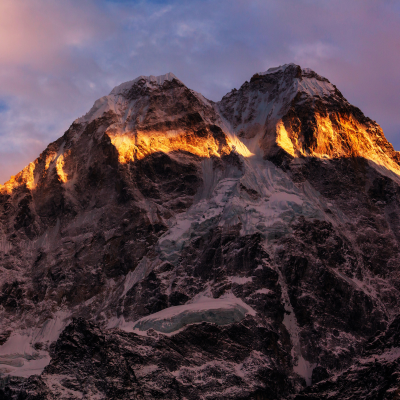 Eastern Nepal
Eastern Nepal
 Everest
Everest
 Manaslu
Manaslu
 Western Nepal
Western Nepal
